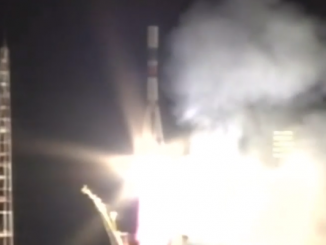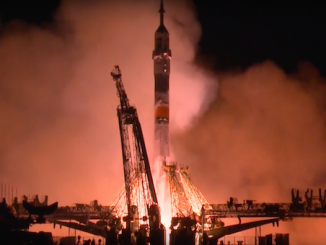A satellite to collect intelligence for the Russian government launched Thursday on top of a Soyuz rocket and reached orbit a few minutes after liftoff from the Plesetsk Cosmodrome about 500 miles north of Moscow.
The Soyuz rocket blasted off from Site 43 at the Plesetsk Cosmodrome at 0301 GMT Thursday (10:01 p.m. EST Wednesday), according to a statement released by the Russian Defense Ministry. The Soyuz 2-1b booster, featuring advanced digital avionics and an upgraded RD-0124 third stage engine, deployed its payload in orbit about 15 minutes later.
The defense ministry said the Soyuz rocket placed its satellite passenger in the correct orbit. Ground controllers established communications with the craft, confirming it was stable and operating normally after Thursday’s launch, which was conducted by Russian military forces.
Tracking data from the U.S. Air Force’s Space Surveillance Network indicated the spacecraft launched by Russia on Thursday is in an elliptical orbit with a low point of about 150 miles and a high point approximately 550 miles above Earth.
The orbit was inclined 67.1 degrees to the equator, according to U.S. tracking data.
Russian authorities identified the payload on Thursday’s Soyuz launch as a communications satellite, but independent observers believe it is the second platform in a new series of spacecraft designed to eavesdrop on radio transmissions.
The satellite’s orbit is the same type of orbit achieved in a November 2009 launch of a new Lotos S military intelligence spacecraft. The satellite launched Thursday is likely the second Lotos S satellite.
A small rocket engine on-board the Lotos S satellite will likely circularize its orbit at an altitude of about 550 miles — or around 900 kilometers — in the next few days.
The Lotos satellites are part of Russia’s Liana intelligence network, which will include new maritime surveillance satellites set for launch in the next few years.
Follow Stephen Clark on Twitter: @StephenClark1.



